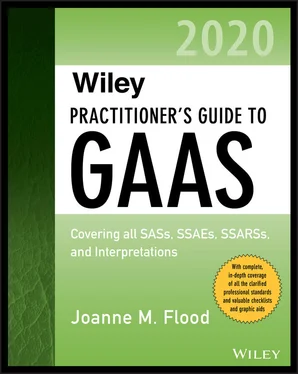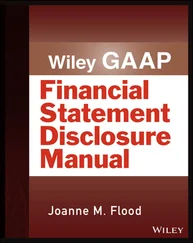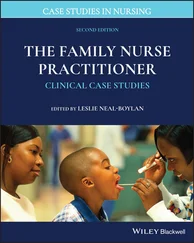Audit risk is the risk that the financial statements are materially misstated and the auditor expresses an inappropriate audit opinion. The auditor must perform the audit to reduce audit risk to a low level. Audit risk is a function of two components:
1 Risk of material misstatement, which is the risk that the financial statements are materially misstated prior to the audit, and
2 Detection risk, which is the risk that the auditor will not detect such misstatements.
The model AR = Risk of material misstatement (RMM) × Detection risk (DR) expresses the general relationship of audit risk and the risks associated with the auditor’s assessment risk of material misstatement (inherent and control risks) and detection risk. (AU-C 320.A1)
Reducing audit risk to a low level requires the auditor to:
1 Assess the risk of material misstatement and, based on that assessment,
2 Design and perform further audit procedures to reduce overall audit risk to an appropriately low level.
The auditor must consider materiality and audit risk during the audit, especially when:
Determining the nature and extent of risk assessment procedures
Identifying and assessing the risks of material misstatements
Determining the nature, timing, and extent of further audit procedures
Assessing the effect of uncorrected misstatements on the financial statements and auditor’s opinion
(AU-C 320.A1)
REQUIREMENTS
Determining Materiality and Performance Materiality
In considering audit risk at the overall financial statement level, the auditor should consider risks of material misstatement that relate pervasively to the financial statements taken as a whole and often potentially relate to many assertions. It is also possible that specific classes of transactions, account balances, or disclosures may exist for which misstatements at a lower amount than the materiality of the financial statements taken as a whole may influence the decisions of users, so the auditor must determine the materiality level for those items. (AU-C 320.10)
Making a Judgment about Materiality When Planning the Audit
When making a judgment during the planning phase about the amount to be considered material to the financial statements, the auditor should first recognize the nature of this amount. It is an allowance or “cushion” for undetected or uncorrected misstatements remaining in the financial statements after all audit procedures have been applied. The auditor’s goal is to plan audit procedures so that if misstatements exceed this amount, there is a relatively low risk of failing to detect them.
It is usually efficient and effective to estimate a single dollar amount to be used in planning the audit. Since the amount is to be used as an aid in planning the scope of auditing procedures, use of a general benchmark is both practical and acceptable. (AU-C 320.A5) For example, many auditors use 5% to 10% of before-tax income or 0.5% to 1% of the larger of total assets or total revenues. Adoption of a benchmark requires consideration of the appropriate base and the percentage of that base to be used to make the calculation.
Determining materiality in the planning phase is a matter of professional judgment. Typically, auditors apply a percentage to an appropriate basis (e.g., total revenues, total assets, etc.) as a starting point for determining materiality. When identifying an appropriate benchmark, the auditor may consider:
How the users use the entity’s financial statements to make decisions
The nature of the entity and the industry in which it operates
The size of the entity, the nature of its ownership, and the way it is financed
The elements of the financial statements
The entity’s ownership and financing structures
The reliability of the benchmark
(AU-C 320.A5)
If the current financial statements are available, amounts from these statements may be used, or interim financial statements may be annualized. However, if significant audit adjustments are expected, an average from prior financial statements may be used. When historical data are used, the auditor should adjust the data for unusual items that affected prior years and for any known changes that can be expected to affect the current period. (AU-C 320.A7)
Usually a single base is necessary because the auditor expresses an opinion on the financial statements taken as a whole rather than on individual financial statements. The most common bases for materiality judgments are:
Profit before tax
Total revenues
Net asset value
Other benchmarks the auditor may use include gross profit and total expenses, total equity, and profit before tax from continuing operations. (AU-C 320.A6)
Some common approaches to using these bases include, but are not limited to, the following:
Select from among the bases recognizing differences in client and industry circumstances.
For example:
If income fluctuates significantly or approaches breakeven, use total revenues.
If the entity is in an industry that is asset intensive, such as a financial institution, use total assets; if the entity is a nonprofit organization, use total revenues.
Otherwise, use income before taxes.
Use a single base that is likely to be valid across most client circumstances or industries. For example, always use the larger of total assets or total revenues.
Consider using appropriate percentages applied to different bases as the outside limits on a range, and select an amount within the range based on judgment. For example, select an amount between X% of income before taxes and Y% of total revenues.
The choice of approach is influenced by judgments about the importance of stability of the base versus flexibility in using judgment in the circumstances.
Nature of a Materiality Benchmark
Several matters should be recognized in using a benchmark to estimate an amount to be used for planning materiality. First, the amount expresses the auditor’s judgment about the total acceptable amount of undetected misstatement and detected but uncorrected misstatement. Thus, this amount in some circumstances may be larger than some auditors have considered to be material.
Second, because the amount includes an allowance for undetected misstatements and includes the combined effect of misstatements, it is not suitable as a threshold for evaluating the materiality of individual misstatements. Also, when evaluating, the auditor should consider qualitative matters and additional information obtained during the audit.
Finally, a benchmark is in no sense a rule. It is simply a guide to making a planning decision. If the benchmark produces an amount that an auditor believes is unreasonable, the auditor’s considered judgment should prevail over arbitrary adherence to the benchmark.
For smaller entities, where the owner takes a significant amount of before-tax profit, it might be prudent to use another benchmark, such as profit before distribution and tax. (AU-C 320.A10)
The auditor should determine a materiality level for the financial statements taken as a whole when establishing the overall audit strategy. This materiality, developed during the planning stage, helps guide the auditor’s judgments in:
Assessing the risks of material misstatement, and
Planning the nature, timing, and extent of further audit procedures.
(AU-C 320.11)
During the audit, the auditor may become aware of information that indicates that a lower level of materiality is more appropriate. In that case, the auditor should consider the necessity of revising performance materiality and whether further audit procedures need to be considered. (AU-C 320.12–.13)
Читать дальше












